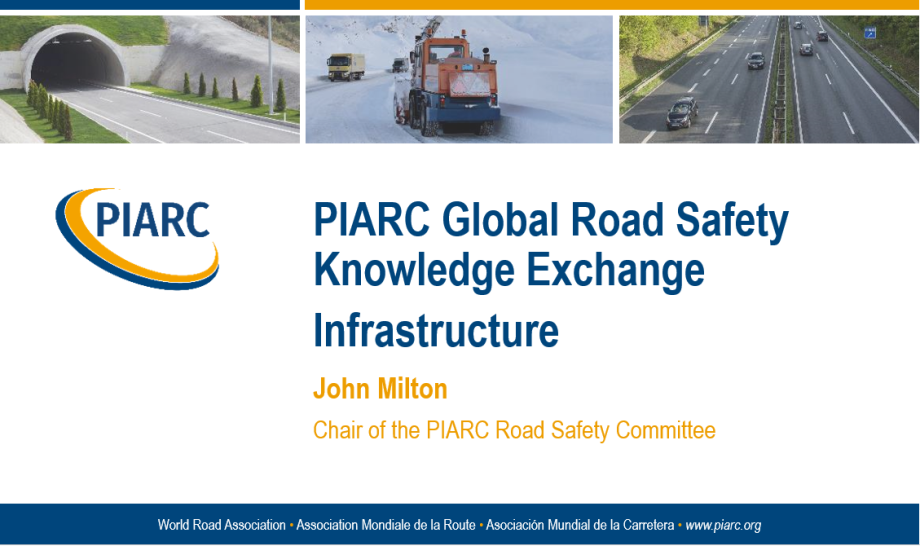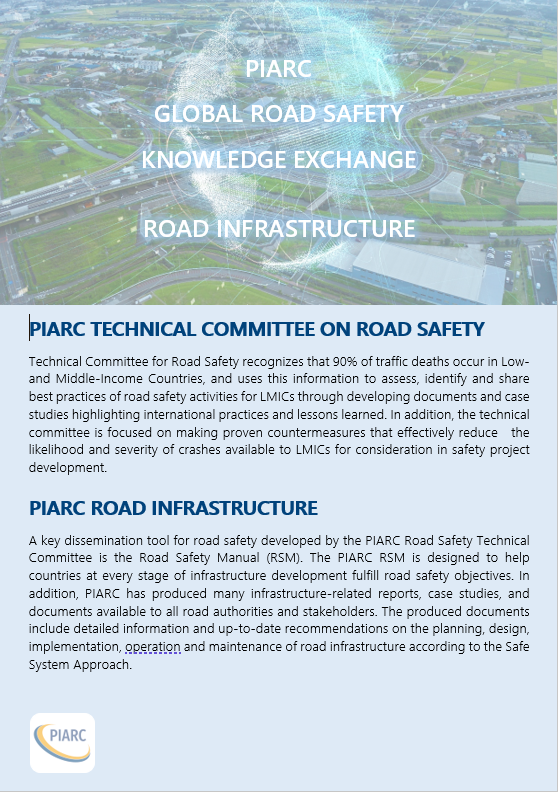PIARC is boosting Road Safety in LMICs: focus on infrastructure!
Published on 14 November 2023.
PIARC Global Road Safety Knowledge Exchange.
John Milton presents the infrastructure issues and safety measures to implement for road safety. Watch now!
Chair of PIARC Technical Committee 3.1 “Road Safety”
Let’s pursue our Road Safety Knowledge Exchange! This global project aims at sharing knowledge about road safety, especially with low- and middle-income countries but also with more developed economies with different needs and priorities. Since January 2023, the Road Safety Knowledge project broached the questions of Vehicles, Speed, Data and Vulnerable Road Users (VRUs) to increase road safety.
This month, let’s focus on infrastructure!

